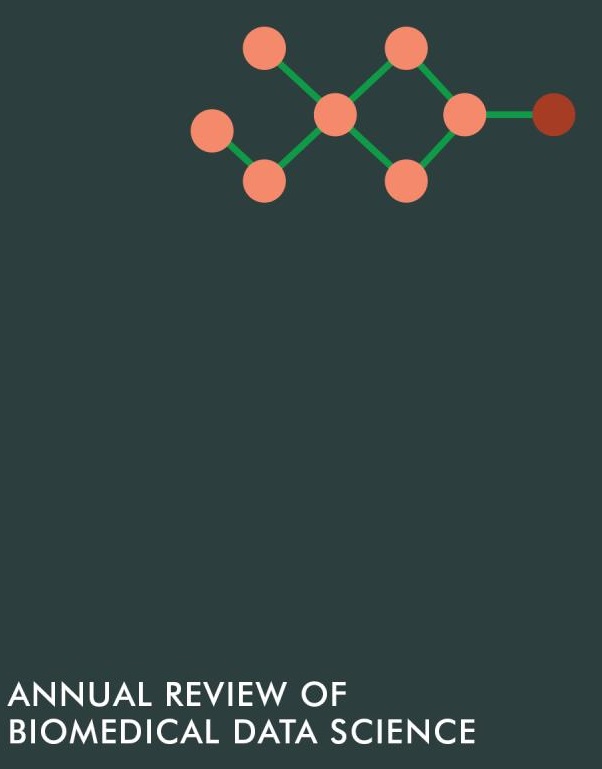网络分析是生物医学数据科学的一大统一体
IF 7
Q1 MATHEMATICAL & COMPUTATIONAL BIOLOGY
Annual Review of Biomedical Data Science
Pub Date : 2018-07-20
DOI:10.1146/ANNUREV-BIODATASCI-080917-013444
引用次数: 28
摘要
生物医学数据科学家研究了许多类型的网络,从神经元形成的网络到分子相互作用产生的网络。人们经常批评这些网络是被称为毛球的难以理解的图表;然而,在这里我们展示了分子生物学网络可以用几种简单的方式来解释。首先,我们可以将网络分解为更小的组件,重点关注单个路径和模块。其次,我们可以计算将网络描述为一个整体的全局统计数据。第三,我们可以比较网络。这些比较可以在相同的背景下(例如,在两个基因调控网络之间)或跨学科(例如,监管网络和政府层级之间)。后一种比较可以将形式主义(如马尔可夫链)从一个上下文转移到另一个上下文,或者将我们在熟悉环境(如社交网络)中的直觉与相对陌生的分子上下文联系起来。最后,分子网络的关键方面是动力学和进化,即它们如何随着时间的推移进化,以及遗传变异如何影响它们。通过研究网络中变异之间的关系,我们可以开始解释许多常见疾病,如癌症和心脏病。本文章由计算机程序翻译,如有差异,请以英文原文为准。
Network Analysis as a Grand Unifier in Biomedical Data Science
Biomedical data scientists study many types of networks, ranging from those formed by neurons to those created by molecular interactions. People often criticize these networks as uninterpretable diagrams termed hairballs; however, here we show that molecular biological networks can be interpreted in several straightforward ways. First, we can break down a network into smaller components, focusing on individual pathways and modules. Second, we can compute global statistics describing the network as a whole. Third, we can compare networks. These comparisons can be within the same context (e.g., between two gene regulatory networks) or cross-disciplinary (e.g., between regulatory networks and governmental hierarchies). The latter comparisons can transfer a formalism, such as that for Markov chains, from one context to another or relate our intuitions in a familiar setting (e.g., social networks) to the relatively unfamiliar molecular context. Finally, key aspects of molecular networks are dynamics and evolution, i.e., how they evolve over time and how genetic variants affect them. By studying the relationships between variants in networks, we can begin to interpret many common diseases, such as cancer and heart disease.
求助全文
通过发布文献求助,成功后即可免费获取论文全文。
去求助
来源期刊
CiteScore
11.10
自引率
1.70%
发文量
0
期刊介绍:
The Annual Review of Biomedical Data Science provides comprehensive expert reviews in biomedical data science, focusing on advanced methods to store, retrieve, analyze, and organize biomedical data and knowledge. The scope of the journal encompasses informatics, computational, artificial intelligence (AI), and statistical approaches to biomedical data, including the sub-fields of bioinformatics, computational biology, biomedical informatics, clinical and clinical research informatics, biostatistics, and imaging informatics. The mission of the journal is to identify both emerging and established areas of biomedical data science, and the leaders in these fields.

 求助内容:
求助内容: 应助结果提醒方式:
应助结果提醒方式:


